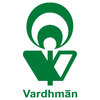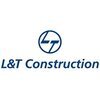Diploma Electrical Engineer
200+ Diploma Electrical Engineer Interview Questions and Answers

Asked in Adani Green Energy

Q. What is the use of a star-delta connection in electrical systems?
Star delta connection is used to start high power motors with reduced starting current and torque.
Reduces starting current and torque
Used for high power motors
Improves motor efficiency
Reduces voltage drop during starting
Reduces stress on motor windings
Example: Starting a large induction motor in an industrial setting

Asked in Adani Green Energy

Q. What kinds of cables are used for power transmissions?
Different types of cables are used for power transmission, including overhead lines, underground cables, and submarine cables.
Overhead lines are commonly used for power transmission over long distances.
Underground cables are used in urban areas where overhead lines are not feasible.
Submarine cables are used for power transmission between islands or across bodies of water.
Different types of cables, such as aluminum cables and copper cables, are used based on the specific requi...read more
Diploma Electrical Engineer Interview Questions and Answers for Freshers
Asked in RUNGTA

Q. Ans- 3 types of motor having in electrical system. A. Synchronous motor B. Asynchronous motor (Induction Motor) C. Special Motor Asynchronous motor:- a. Squirrel Cage induction motor b. Slip ring Induction Moto...
read moreThere are three types of motors in electrical systems: synchronous, asynchronous (induction), and special motors.
Asynchronous motors include squirrel cage and slip ring induction motors.
Special motors include universal, stepper, brushless DC, and servo VFD motors.
Synchronous motors are used in applications where constant speed is required, while asynchronous motors are used in most industrial applications.
Special motors have unique features such as high torque, precise contro...read more

Asked in Himadri Speciality Chemical

Q. What is the difference between a generator and an alternator?
Generators and alternators are both electrical machines that convert mechanical energy into electrical energy, but they differ in their construction and working principles.
Generators produce direct current (DC) while alternators produce alternating current (AC).
Generators use a commutator and brushes to convert mechanical energy into electrical energy, while alternators use slip rings and brushes.
Generators are typically used in small-scale applications, such as portable powe...read more

Asked in Maruti Suzuki

Q. What is Ohm's Law? State that current is directly proportional to voltage and inversely proportional to resistance at a constant temperature.
Ohm's law states that current is directly proportional to voltage and inversely proportional to resistance at a constant.
Current increases as voltage increases, and decreases as resistance increases.
Voltage is measured in volts (V), current in amperes (A), and resistance in ohms (Ω).
Ohm's law can be expressed as I = V/R, where I is current, V is voltage, and R is resistance.


Q. Are you familiar with the different varieties of wires used in transmission?
Yes, there are different types of wires used in transmission.
The most common types of wires used in transmission are copper, aluminum, and steel-cored aluminum.
Copper wires are the most efficient and expensive, while aluminum wires are less efficient but more affordable.
Steel-cored aluminum wires are used for long-distance transmission as they have high tensile strength.
Other types of wires used in transmission include ACSR (Aluminum Conductor Steel Reinforced) and AAC (All A...read more
Diploma Electrical Engineer Jobs




Asked in Tech Mahindra

Q. What is another name for an induction motor?
Another name for induction motor is asynchronous motor.
Asynchronous motor is commonly used in industrial applications.
It operates at a slightly slower speed than the synchronous speed.
Examples include squirrel cage induction motor and wound rotor induction motor.


Q. What are the differences between a neutral wire and an earth wire?
The neutral wire carries current back to the source, while the earth wire provides a path for electrical faults to safely discharge.
Neutral wire carries current back to the source
Earth wire provides a path for electrical faults to safely discharge
Neutral wire is typically colored white or gray
Earth wire is typically colored green or green with yellow stripes
Neutral wire is connected to the grounding system at the main electrical panel
Earth wire is connected to the grounding e...read more
Share interview questions and help millions of jobseekers 🌟


Asked in Megha Engineering & Infrastructures

Q. How many earthing connections are required for a transformer?
The number of earthing required for commencing a transformer depends on the type and size of the transformer.
The number of earthing required for a transformer depends on its rating and the local electrical regulations.
In general, a single earthing electrode is sufficient for small transformers with ratings up to a few hundred kVA.
For larger transformers, multiple earthing electrodes may be required to ensure proper grounding.
The exact number of earthing electrodes and their s...read more

Asked in Megha Engineering & Infrastructures

Q. What level of electric current is considered safe for humans?
The acceptable current for humans depends on various factors such as duration, frequency, and pathway.
The acceptable current for humans is typically below 1 mA for low-frequency currents.
For high-frequency currents, the acceptable current is lower, usually below 0.1 mA.
The duration of exposure also plays a significant role in determining the acceptable current.
The pathway of the current through the body, such as hand-to-hand or hand-to-foot, affects the acceptable current.
Fac...read more

Asked in Reliance Digital

Q. What is the use of substations in distribution or transmission lines?
Substations are used in distribution and transmission lines to control voltage levels, protect equipment, and facilitate power transfer.
Substations help in stepping up or stepping down the voltage levels as required.
They provide a centralized location for monitoring and controlling the flow of electricity.
Substations house transformers, circuit breakers, and other equipment for voltage regulation and protection.
They enable power transfer between different transmission lines o...read more

Asked in Nokia

Q. What is electrical machine . State ohms law . Define kvl and kcl etc
An electrical machine is a device that converts electrical energy into mechanical energy or vice versa. Ohm's Law relates voltage, current, and resistance. KVL and KCL are laws used in circuit analysis.
Electrical machine is a device that converts electrical energy into mechanical energy or vice versa
Ohm's Law states that the current flowing through a conductor is directly proportional to the voltage applied across it and inversely proportional to the resistance of the conduct...read more


Q. What are some key differences between a fuse and a circuit breaker?
A fuse is a one-time use device that melts when overloaded while a breaker can be reset and reused.
A fuse needs to be replaced after it melts while a breaker can be reset
A fuse is cheaper than a breaker
A fuse reacts faster to overloads than a breaker
A breaker can handle higher current loads than a fuse
Examples of fuses include glass tube fuses and cartridge fuses while examples of breakers include thermal-magnetic and ground fault circuit interrupters (GFCI)

Asked in Tech Mahindra

Q. What type of motor runs at high speed under no load conditions?
Induction motors run at high speed at no load conditions
Induction motors
Asynchronous motors
Squirrel cage motors

Asked in Jindal Steel and Power

Q. What are the different types of electric vehicle batteries, and how do they impact overall performance?
Different types of electric vehicle batteries include lithium-ion, lead-acid, and nickel-metal hydride, each impacting performance in terms of energy density, weight, cost, and charging time.
Lithium-ion batteries are commonly used in electric vehicles due to their high energy density, lightweight, and long lifespan.
Lead-acid batteries are less expensive but heavier and have lower energy density compared to lithium-ion batteries.
Nickel-metal hydride batteries are a middle-grou...read more

Asked in Tech Mahindra

Q. Why can't we operate a transformer with a DC supply?
Transformers cannot operate on DC supply due to the absence of changing magnetic field required for induction.
Transformers work on the principle of electromagnetic induction, which requires a changing magnetic field.
DC supply produces a constant magnetic field, which does not induce a voltage in the secondary coil of the transformer.
AC supply, on the other hand, produces a changing magnetic field, allowing for induction and voltage transformation.
Operating a transformer on DC...read more

Asked in Nokia

Q. What is clamp meter and teco meter , what is capacitance
A clamp meter is a tool used to measure electrical current without the need to disconnect the circuit, while a teco meter is used to measure the speed of an electric motor. Capacitance is the ability of a component to store electrical charge.
Clamp meter is used to measure electrical current in a conductor without the need for direct contact.
Teco meter is used to measure the speed of an electric motor.
Capacitance is the ability of a component to store electrical charge, measur...read more

Asked in MG Motor

Q. What is your experience in the field of automation?
I have 2 years of experience working with PLCs, SCADA systems, and industrial robots in the automation field.
Experience with programming PLCs for automated control systems
Knowledge of SCADA systems for monitoring and controlling industrial processes
Hands-on experience with industrial robots for automation tasks
Familiarity with sensors, actuators, and other automation components
Worked on projects involving automation in manufacturing and production environments

Asked in Megha Engineering & Infrastructures

Q. What is vcb? Whwere it is installed
VCB stands for Vacuum Circuit Breaker. It is a type of electrical switchgear used for protecting electrical circuits from overloads and short circuits.
VCB uses vacuum as the arc quenching medium instead of oil or air.
It is installed in high voltage power systems, such as substations and power plants.
VCBs are commonly used in distribution networks, generator circuits, and transformer circuits.
They provide reliable and efficient protection against electrical faults.
Examples of ...read more


Q. How many types of solar panel installations are there?
There are mainly two types of solar panel installation: On-grid and Off-grid.
On-grid installation is connected to the main power grid and excess energy can be sold back to the utility company.
Off-grid installation is not connected to the main power grid and requires battery storage to store excess energy.
Other types include ground-mounted, roof-mounted, and pole-mounted installations.
Installation methods can also vary depending on the type of roof or ground surface.
Asked in Mahendra Electricals

Q. What Electrical manufacturing company and what is its uses in our field
Siemens is an electrical manufacturing company that produces a wide range of electrical products and solutions for various industries.
Siemens is a global company that produces electrical products and solutions for industries such as energy, healthcare, and transportation.
Their products include power generation equipment, automation systems, medical imaging equipment, and more.
Siemens is known for their innovative technologies and commitment to sustainability.
In the electrical...read more

Asked in BHEL

Q. What are the different types of transformers?
There are several types of transformers used in electrical engineering.
Power transformers
Distribution transformers
Instrument transformers
Auto transformers
Isolation transformers
Step-up transformers
Step-down transformers

Asked in AAR Consulting and Services

Q. What are the primary and secondary connection sequences of a transformer?
Primary connection sequence: H1-H2, Secondary connection sequence: X1-X2
Primary connection sequence is typically H1-H2
Secondary connection sequence is typically X1-X2
The primary winding is connected to the supply voltage, while the secondary winding is connected to the load
The connection sequence may vary depending on the transformer manufacturer and design
Proper connection sequence is crucial for the transformer to function correctly

Asked in Pricol

Q. What is motor, genrator,PCB &soldiring or component etc.
Motors and generators are electrical machines that convert electrical energy into mechanical energy and vice versa. PCB and soldering are components used in electronic circuits.
Motors convert electrical energy into mechanical energy to produce motion.
Generators convert mechanical energy into electrical energy.
PCB (Printed Circuit Board) is a board made of insulating material with conductive pathways etched onto it to connect electronic components.
Soldering is the process of j...read more

Asked in Apollo Tyres

Q. Do you know ac dc in electricala? How many types transformee?
AC and DC are two types of electrical current. There are two types of transformers - step-up and step-down.
AC stands for alternating current and DC stands for direct current
AC changes direction periodically while DC flows in one direction
Step-up transformers increase voltage while step-down transformers decrease voltage
Transformers are used to transfer electrical energy from one circuit to another
Examples of AC devices include household appliances and power grids, while examp...read more

Asked in RSB Transmissions

Q. What is transfomer, motor, and about moulding machine and it's function
Transformers, motors, and molding machines are essential electrical devices used in various industrial applications.
Transformer: A device that transfers electrical energy between two or more circuits through electromagnetic induction, used in power distribution.
Example: Step-up transformers increase voltage for long-distance transmission, while step-down transformers reduce voltage for local use.
Motor: An electromechanical device that converts electrical energy into mechanica...read more

Asked in JSW Steel

Q. All electrical types
The question is asking for knowledge about all types of electrical systems.
Knowledge of different types of electrical systems such as AC, DC, single-phase, three-phase, etc.
Understanding of electrical components and their functions, such as resistors, capacitors, transformers, etc.
Familiarity with electrical codes and regulations.
Ability to read and interpret electrical schematics and diagrams.
Troubleshooting skills to identify and fix electrical faults.
Knowledge of electrica...read more

Asked in Student Life

Q. What are the advantages of a stationary armature and rotating field system?
Stationary armature and rotating field system offers advantages like simplified construction, reduced maintenance, and improved efficiency.
Simplified construction: Stationary armature allows for a simpler design with fewer moving parts, reducing the chances of mechanical failure.
Reduced maintenance: With the armature stationary, there is less wear and tear on the components, leading to lower maintenance requirements.
Improved efficiency: The rotating field system allows for be...read more

Asked in SBI Life Insurance Company

Q. What types of beakers are used in electrical engineering?
There are no specific types of beakers used in electrical engineering.
There are no beakers specifically used in electrical engineering.
Beakers are commonly used in chemistry labs for measuring and mixing liquids.
In electrical engineering, other types of equipment like multimeters, oscilloscopes, and power supplies are used.

Asked in MG Motor

Q. What is the functioning of a work slot conveyor?
A work slot conveyor is a type of conveyor system used to transport workpieces between different workstations in a manufacturing facility.
Work slot conveyors typically consist of a series of slots or compartments that hold the workpieces securely in place during transportation.
The conveyor moves the workpieces along a predetermined path, stopping at each workstation where a specific task is performed.
Work slot conveyors are commonly used in assembly lines for industries such ...read more
Interview Questions of Similar Designations
Interview Experiences of Popular Companies






Calculate your in-hand salary
Confused about how your in-hand salary is calculated? Enter your annual salary (CTC) and get your in-hand salary


Reviews
Interviews
Salaries
Users










